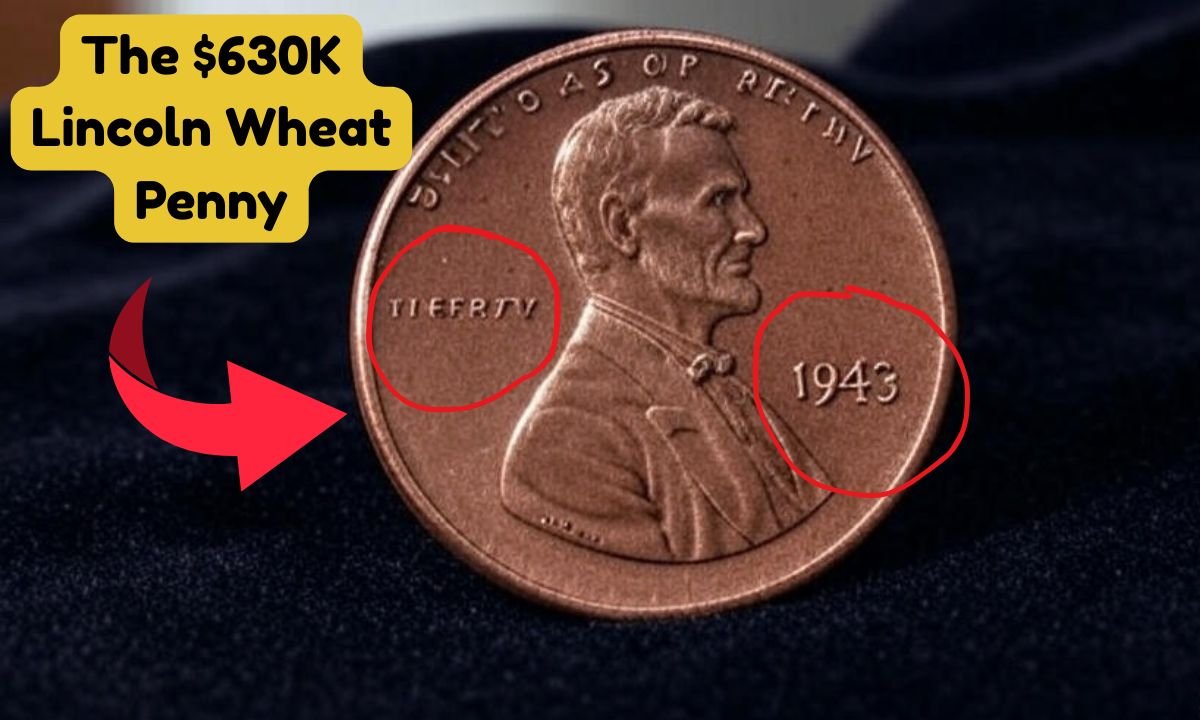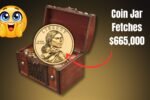Have you ever picked up a penny from the sidewalk and thought, “This is just pocket change”? What if I told you that one tiny penny could be worth more than a fancy car or even a house? That’s right! The Lincoln Wheat Penny, a small coin from the past, has a rare version that sold for a jaw-dropping $630,000. How did a simple penny become a treasure? Let’s dive into this exciting story of history, luck, and a little mistake that turned pocket change into a fortune.
A Penny with a Big History
The Lincoln Wheat Penny isn’t just any coin. It first hit pockets in 1909 to celebrate Abraham Lincoln’s 100th birthday. The U.S. Mint decided to put Lincoln’s face on the penny, making it the first American coin to feature a real person. Designed by Victor David Brenner, the coin has Lincoln’s portrait on the front and two wheat stalks on the back, giving it a cool, old-school vibe. These wheat stalks were a nod to America’s farming roots, and people loved the design. It was used until 1958, but one year—1943—made this penny a legend.
The Mistake That Made Millions
So, what makes this penny so special? It all comes down to a tiny error during World War II. In 1943, copper was super important for making things like bullets and wires for the war. To save copper, the U.S. Mint switched to making pennies out of steel coated with zinc. These “steel pennies” are silver-looking and pretty common. But here’s the twist: a few copper blanks from 1942 got mixed up in the minting machines and were stamped as 1943 pennies. Only about 20 of these copper pennies are known to exist, making them crazy rare. One of them sold for $630,000 because of this mistake! Can you imagine finding something that valuable in your change jar?
How to Spot a Treasure
Now, you’re probably wondering, “Could I have one of these pennies?” It’s possible! These rare coins might still be hiding in old coin collections, piggy banks, or even your pocket change. Here’s how you can check if you’ve got a winner:
- Look at the Year: Check for “1943” on the front of the penny.
- Do the Magnet Test: Grab a magnet. If the penny sticks, it’s steel and not super valuable. If it doesn’t stick, it might be the rare copper version.
- Check the Color: Copper pennies have a reddish-brown hue, while steel ones are silver-gray.
If you think you’ve found one, don’t clean it! Cleaning can ruin its value. Instead, take it to a coin expert to get it checked out. Who knows? You might be holding a fortune!
Other Valuable Wheat Pennies
The 1943 copper penny is the superstar, but other Lincoln Wheat Pennies can also make you some serious cash. For example, the 1909-S VDB penny, with the designer’s initials, can sell for over $100,000 in top condition. The 1914-D and 1922 No-D pennies are also collector favorites because of their rarity. These coins might not hit the $630,000 mark, but they’re still worth way more than a cent. It’s like finding a hidden gem in a pile of rocks!
The Thrill of the Hunt
What makes the Lincoln Wheat Penny so exciting is the idea that one could still be out there. People have found valuable coins in all sorts of places—old jars, flea markets, or even change from a coffee shop. Imagine going through your grandma’s coin collection and spotting a 1943 copper penny! Stories like these keep coin collectors and regular folks like you and me on the hunt. It’s like a treasure hunt you can do without leaving home. Every penny you see could be a ticket to something big.
Tips for Keeping Your Coins Safe
Found a penny that looks special? Treat it like a delicate flower. Hold it by the edges so your fingers don’t leave oily marks. Store it in a plastic coin holder to keep it safe. And whatever you do, don’t scrub or polish it! Collectors love coins with their original look, and cleaning can make them worth less. If you think you’ve got something rare, take it to a professional coin grader like PCGS or NGC. They’ll tell you if it’s the real deal and how much it’s worth.
Why We Love These Pennies
The $630,000 Lincoln Wheat Penny is more than just money—it’s a piece of history. It’s a reminder of a time when the world was at war, and a small mistake at the U.S. Mint created something extraordinary. Collectors chase these pennies not just for their value but for the stories they tell. It’s like holding a little piece of the past in your hand. Plus, the idea that a penny could change your life is just plain fun!
Conclusion
The Lincoln Wheat Penny shows us that even the smallest things can hold huge value. A tiny mistake in 1943 turned an ordinary penny into a $630,000 treasure, sparking dreams of finding one in our own pockets. Whether you’re a coin collector or just someone who loves a good story, this penny reminds us to pay attention to the little things. So, next time you see a penny, give it a second look. You might just find a fortune hiding in plain sight!
FAQs
What makes the 1943 Lincoln Wheat Penny so valuable?
It’s rare because it was accidentally made with copper instead of steel during World War II.
How can I tell if my 1943 penny is the rare one?
Use a magnet. If it doesn’t stick and has a reddish-brown color, it might be the valuable copper version.
Can I clean my penny to make it worth more?
No! Cleaning can damage the coin and lower its value. Keep it as is and get it checked by an expert.
Where might I find a rare Lincoln Wheat Penny?
Check old coin jars, collections, or even pocket change. They’ve been found in surprising places!
Are other Lincoln Wheat Pennies valuable too?
Yes, coins like the 1909-S VDB or 1914-D can be worth thousands, depending on their condition.




